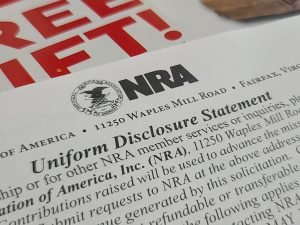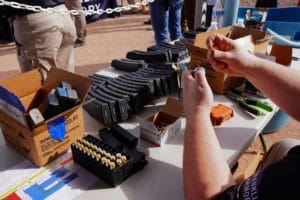The beginning of this week saw multiple mass shootings in California, something nobody wants to see. But it keeps happening, and there are few potential solutions that everyone can agree on.
In the political realm, some want to see more guns banned, while others want to eliminate gun-free zones. But it’s essential to follow the research on the topic to see what similarities can be identified between all these attacks and suss out a potential solution.
That’s why Contributing Writer Jake Fogleman took a deep dive into the Secret Service report released this week. Instead of gun policies, Jake explains why the report recommends community intervention. And he discusses the warning signs that should raise alarms for family members, coworkers, school staff, or others who notice them.
Guest contributor Konstadinos Moros also examines California’s oft-cited gun death rate to see whether its gun laws actually reduce mass shootings, murders, or suicides, as advocates claim. How does California stack up to its less-restrictive neighbors?
Plus, Bearing Arms’ Cam Edwards joins the podcast to talk about the ATF’s recent inconsistencies.
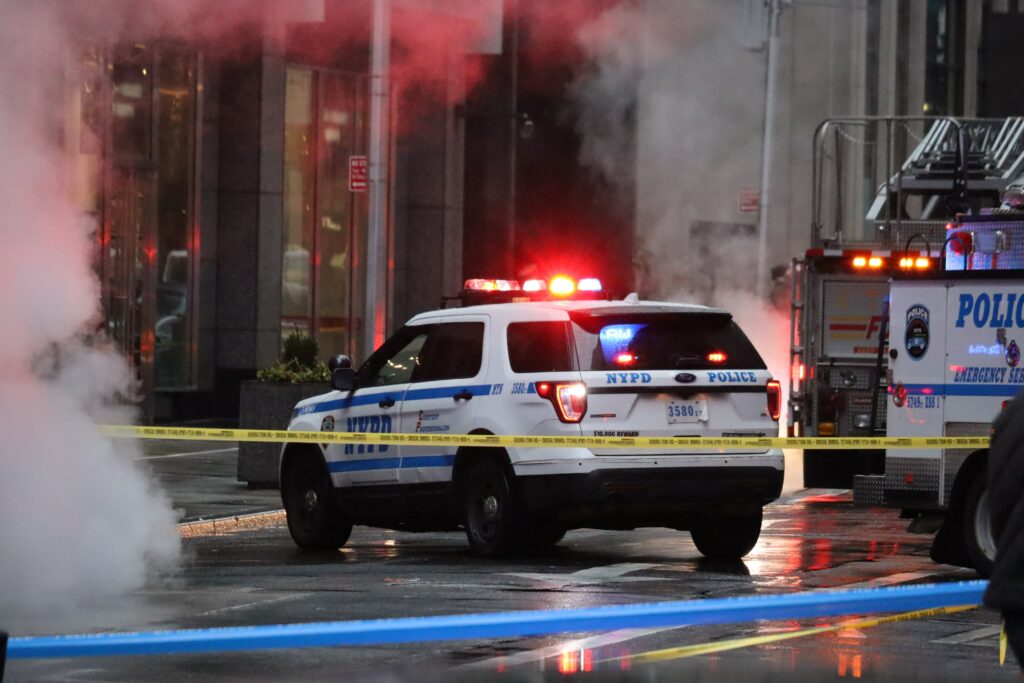
Analysis: Whole Community Effort Needed to Combat Mass Shootings [Member Exclusive]
By Jake Fogleman
A new U.S. Secret Service report adds to a growing body of research documenting common behavior patterns among mass attackers. It also highlights the potential for community intervention, both broadly and on a small scale, to make a real difference.
The National Threat Assessment Center’s (NTAC) report published Wednesday analyzed 173 “mass attacks”—defined as incidents in which three or more people, not including the attacker, were harmed in public or semi-public places—between 2016 and 2020. The report uncovered many patterns linking various attackers to one extent or another, but what most perpetrators had in common was striking.
More than three-quarters of the individuals who committed mass attacks exhibited concerning behaviors or shared alarming communications before carrying them out. Nearly two-thirds exhibited behaviors or shared communications that were so concerning “they should have been met with an immediate response,” according to the researchers. Roughly 60 percent of the attackers exhibited behavior that caused others to fear for the safety of the attacker, themselves, or the broader public.
Often these concerning behaviors manifested in the form of expressed threats, actively making plans to carry out an attack, more minor acts of violence, or harassing behaviors.
For anyone who has spent time following the news coverage of these all-too-frequent incidents, the study results likely won’t come as much of a surprise. Time after time, it seems reports come out of the woodwork only after an incident has already transpired, revealing troubling details from an attacker’s past that, in hindsight, should have made it all too clear what was bound to happen.
But this new report makes clear that such perception is more than just anecdotal. The data bears it out. Mass attackers do, in fact, routinely exhibit a pattern of troubling behaviors that are generally identifiable by others, whether it’s family members, friends, classmates, employers, coworkers, or law enforcement.
That means any attempt to interrupt those patterns, either by reporting them to the proper authorities before they manifest further, or connecting the troubled individual with supportive services, has the real potential to prevent future attacks.
Indeed, NTAC’s researchers recommended “developing community violence prevention programs” to help curb the scourge of mass violence. Some strategies the agency identified include for communities to “facilitate bystander reporting” and to respond appropriately when concerns are received. They also encouraged public safety officials, businesses, and schools to work to establish violence prevention plans to “identify, assess, and intervene” with individuals who may pose a threat of violence.
Such a solution also has the advantage of being tailored to the most data-driven factors linking most attacks. Other commonly proposed solutions, like bans on so-called assault weapons (mostly rifles like the AR-15), miss the mark by failing to address the reality of most incidents, to say nothing of the political backlash they engender.
The NTAC report also found that not all mass attacks involve firearms; even among those that do, handguns overwhelmingly represent the weapon of choice. This is corroborated by other studies looking at the topic. For example, researchers with the Violence Project found that eighty percent of all mass shootings (where four or more are killed) dating back to the 1960s involved a handgun.
And it’s not pure theory that solutions like establishing bystander reporting protocols and crisis intervention programs tailored toward addressing common patterns can work. There is evidence that when properly implemented, they can and have successfully stopped mass attacks from occurring.
A 2022 study from researchers with the RAND Corporation examined 640 mass attack plots between 1995 and 2020. The researchers found that the perpetrator’s plan was discovered in half the cases before it could be carried out, preventing the intended carnage. In two-thirds of thwarted plots, the attacker’s plan was uncovered by a tip from a member of the public.
As recently as last July, a tip to police called in by a member of the public was credited with thwarting a planned mass shooting in Richmond, Virginia, during an Independence Day celebration. Just a few days prior, another mass shooting incident was likely averted in San Antonio, Texas, after the coworker of a potential shooter tipped off police.
These community-based solutions will likely not be satisfying to all. They also won’t prevent all future attacks. Indeed, the NTAC report acknowledges that nearly a quarter of all attackers studied did not exhibit any concerning pre-attack indicators before committing their crimes. It also noted there is no specific profile for attackers, and potential warning signs won’t lead to mass violence in the vast majority of situations where they do show up.
But the NTAC recommendations have the advantage of directly responding to the most common theme identified that links most attacks to one another. Accordingly, encouraging bystander and community-based intervention seem to be the most promising path forward to preventing more mass attacks.
Podcast: Bearing Arms’ Cam Edwards on Pistol Brace Ban Updates and ATF Inconsistency [Member Early Access]
By Stephen Gutowski
This week we have one of my favorite guests back on the show: Cam Edwards of Bearing Arms.
There are few people who follow gun politics as closely as Cam. And even fewer are capable of the intelligent analysis he commonly offers. So, I’m glad he’s back to talk about the complicated ins and outs of the ATF’s recent rule proposals and public statements.
The ATF clarified several points regarding its upcoming pistol brace ban this week. It said foreign-made braced guns can be either dismantled or registered as short-barrel rifles to comply with the new ban instead of being destroyed or turned in. They also announced plans to officially publish the rule on January 31st, giving Americans until May to comply before it becomes a crime not to do so.
Cam said much of the 293-page rule is still confusing, even for somebody who follows gun news for a living. Are there any braced guns that the ATF won’t consider SBRs? Do braces have to be destroyed after being removed to comply with the dismantling requirements? Can the ATF’s current determinations even be trusted, given how often they reverse themselves?
Speaking of the ATF reversing itself, Cam also gives an update on a recent Q&A posted on the agency’s website claimed NFA items, such as suppressors or machineguns, could no longer be possessed by anyone other than the owner. That supposedly included times when the owner was there in person and allowing somebody else to try out or rent their gun. Cam said the ATF admitted this isn’t true and, apparently, some kind of mistake.
He said all these inconsistencies hurt the agency’s credibility and make it very difficult for gun owners to navigate thorny legal questions that could produce serious consequences.
Plus, Contributing Writer Jake Fogleman and I discuss a new Secret Service report detailing strategies to prevent mass killings.
The show is available on your favorite podcasting app or by clicking here. Video of the episode is also available on our YouTube channel. As always, Reload Members get early access on Sunday. Everyone else can listen or watch on Monday.
Come on the Podcast
One of the many perks of a Reload membership is the opportunity to appear on the podcast. We’ve had a lot of people on the show from all kinds of backgrounds. It’s one of my favorite segments since it gives us all a better insight into the community that makes this publication possible. If you want to come on the show, just reply to this email and let me know!
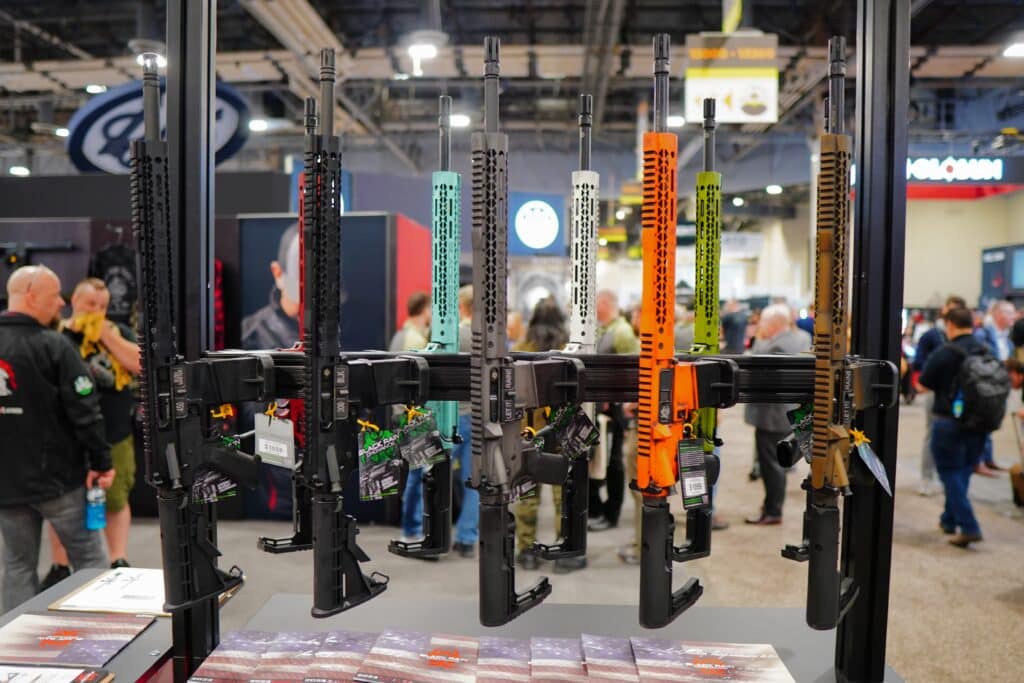
Analysis: California’s Gun Death Rate Isn’t as Impressive as California Governor Newsom Implies [Member Exclusive]
By Konstadinos Moros
The reaction from Governor Gavin Newsom (D.) to two horrifying mass shootings terrorizing Californians in the same week was swift. He called for Congress to adopt California’s gun laws as a solution. But there are significant problems with that argument.
Newsom argued the state’s laws, while they have failed to stop every mass shooting, are the reason the state has a lower “gun death” rate than many other states. He notes California’s gun death rate is even 37 percent lower rate than the national average, an example of why the nation should respond to California’s mass shootings by adopting California’s gun laws.
“The Second Amendment is becoming a suicide pact,” Newsom told CBS News while insisting he has respect for gun owners. “I just want to take away weapons of war that are illegal in California and should be illegal across the United States.”
But gun deaths, also a popular stat among gun-control advocates and organizations, are a poor way to judge the impact of gun laws on preventing mass killings or murder. That’s because it lumps together murders, accidental deaths, and suicides. And suicides are the most common form of gun death, making up more than half of gun deaths in the past two years and 2/3rds in the years preceding the recent national spike in murders.
While suicide and its intersection with the gun control debate is an important topic, when it comes to concerns about the criminal use of guns against others, it is gun-related homicide statistics that are the far more relevant metric. And when that is the measuring stick, California is much less remarkable.
California is rated highly by gun control groups because it has things like an “assault weapons” ban, magazine capacity laws, universal background checks, strict concealed carry permit policies, and much more. That is why it makes for an interesting comparison to Arizona, California’s next-door neighbor that is just about the exact opposite and has few of the signature gun control laws Newsom wants Congress to adopt. While Everytown gives California a “Gun Law Strength” score of 86.5, Arizona gets just an 8.5.
But Arizona’s gun-murder rate isn’t much different from California’s rate. The states are quite close to each other most years. For example, in 2020, Arizona had 5.1 gun-related homicides per 100,000 people, compared to 4.4 per 100,000 for California. Similar figures hold for all of California’s more pro-gun neighbors too. Nevada, while not quite as friendly to gun rights as Arizona, has no assault weapons ban, no high-capacity magazine restrictions, and the state allows residents to openly carry guns without a permit. Oregon hasn’t traditionally had a lot of gun-control laws and still has no assault weapon restrictions, though it did enact magazine capacity restrictions through a narrow vote last year that is currently held up in court.
All three of California’s immediate neighbors are less strict on guns to varying degrees, yet CDC data shows California’s gun-related homicide rate isn’t even the lowest of the four and is only marginally better than Arizona and Nevada.
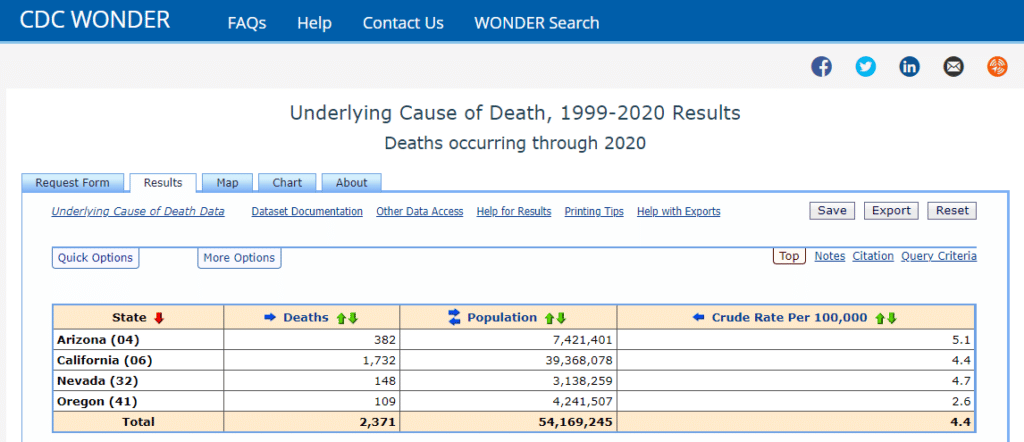
Expanding beyond just the west coast region, several other states that are favorable to gun rights (or at least much more favorable to them relative to California) can boast gun-related homicide rates that are similar to or less than California’s, including: Maine, North Dakota, Wyoming, Idaho, Utah, Minnesota, Nebraska, Iowa, South Dakota, Montana, Alaska, Colorado, Wisconsin, West Virginia, Virginia, Kansas, and Florida. California’s gun-related homicide rate is certainly not terrible, but it is just as certainly not especially low, with many pro-gun states enjoying a similar rate or better.
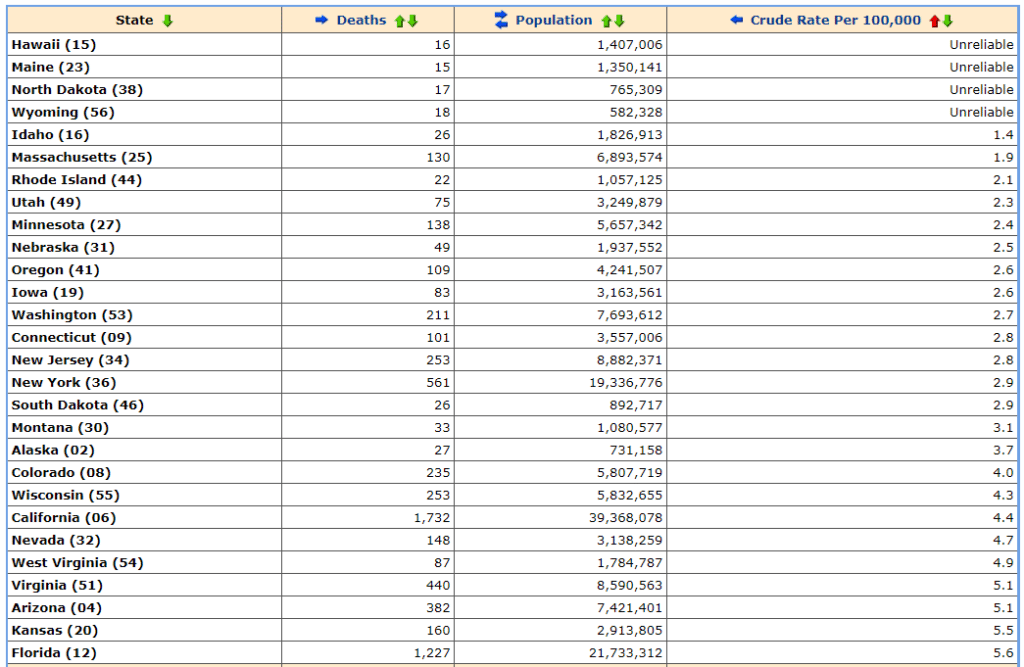
If California’s stringent gun laws are not leading to exceptional results in terms of gun-related homicides, are they at least leading to less mass shootings? Governor Newsom has argued as much. His webpage quotes the Public Policy Institute of California, which explains that “Compared to citizens of other states, Californians are about 25% less likely to die in mass shootings. Between 2019 and 2021, the state’s annual mass shooting homicide rate of 1.4 per one million people was lower than the national average of 1.9.”
That may be so, but 2019-2021 seems like an oddly restrictive timeframe to limit the examination to, particularly when California has had many of its gun laws for several years. After all the state’s assault weapons ban dates all the way back to 1989.
A couple of different sources track mass shootings based on widely varying criteria. While no definition is perfect, Mother Jones’s database does a good job of only including the types of events that people are likely to have in mind when they think of a “mass shooting.” They include incidents where the perpetrator killed at least three people in a public place. And they exclude gang-related shootings as well.
Mother Jones’s data, which stretches back to 1982, tells us that through the present day 1,092 Americans have been killed in mass shootings. Of those, 175 were killed in shootings that occurred in California, meaning the state has about 16% of the nation’s mass shooting deaths despite only having roughly 12% of the nation’s population. California thus has slightly more mass shootings deaths than its share of the population would suggest.

Even getting away from the fatality counts and just measuring based on the frequency of these events does not help California’s case. California accounts for 26 out of the 140 mass shootings on Mother Jones’s list, or roughly 18.5%, again out of proportion to the State’s 12% share of the population.
So, the state’s policies don’t appear to performing as well on stopping gun murder or even mass shootings as Newsom’s use of the gun death rate seems to imply. But it may also mislead on how well California’s gun laws have performed at preventing suicides.
According to the CDC, in the year 2000, California had 4.4 gun-related suicides per 100,000 people. By 2020, that had dropped only slightly, to 3.9 per 100,000. We also don’t have proof that California’s gun laws led to that 0.5 per 100,000 reduction. Additionally, in the same timeframe, California’s overall suicide rate actually rose.
In 2000, it was 8.8 per 100,000 but reached 10.5 per 100,000 by 2020.
That means fewer people in California are committing suicide with firearms than two decades ago, but slightly more are committing suicide overall. The best that can be said is that it seems California’s gun-control laws may have limited the number of people using firearms to commit suicide, but it sadly appears that has been offset by more Californians using other methods to carry out the act.
Governor Newsom’s claims that California’s gun laws have worked to reduce “gun deaths” is at the very least misleading, relying heavily on suicide data to hold onto any claim of being accurate. Many states that take the opposite approach, or at least don’t go nearly as far as California on gun control, have similar or better results in terms of gun-related homicide. And the state isn’t doing any better at preventing mass shootings either.
That’s it for now.
I’ll talk to you all again soon.
Thanks,
Stephen Gutowski
Founder
The Reload





